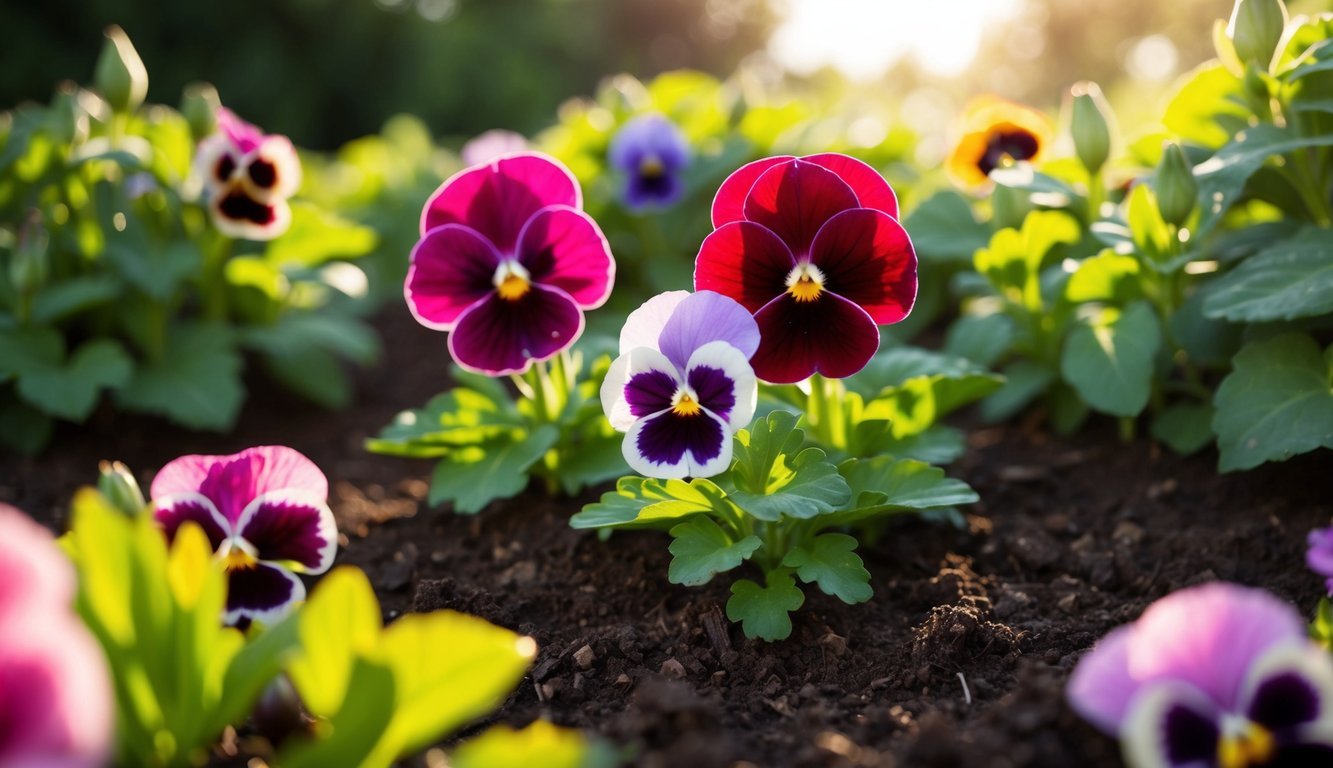
Pansies are a delightful addition to any garden, especially in cooler climates, where their bright colors cheer up late winter and spring landscapes.
Despite their resilience to environmental stress, these beautiful flowers require careful watering to thrive.
Striking the right balance is essential—too much water can drown them, while too little can leave them parched.
To help you keep your pansies in top shape, we gathered insights from gardening specialists on how to effectively water these lovely plants.
Watering Frequency and Techniques
For optimal health, plan to water your pansies once or twice a week.
Regularly check the soil’s moisture level; it’s essential to maintain a state of consistent dampness without letting the soil become waterlogged.
A good rule of thumb is to examine the top inch of soil: if it feels dry to the touch, it’s time to give your pansies a drink.
In areas with intense heat or during dry periods, especially for those in containers or raised beds, you may need to increase the frequency of your watering.
Effective Watering Strategies for Pansies
Before you turn on the hose or fill your watering can, take a moment to gauge the soil’s moisture.
This will help you avoid the pitfalls of overwatering.
Using a gentle spray from a hose or a watering can, focus the water around the base of the plant rather than on the leaves.
Wet foliage can lead to diseases, especially fungal infections.
Early morning is the ideal time for watering, as it allows the soil to dry out before cooler evening temperatures set in.
Keeping the leaves dry is vital to preventing problems like botrytis, which appears as grey mold on moist plant tissue.
Signs Your Pansies Need Attention
If your pansies are wilting, that could be a telltale sign of insufficient water.
Watch for droopy leaves and flowers, or a loss of vibrant color, which will dull their overall appearance.
While pansies can bounce back from occasional dry spells, chronic underwatering can stunt their growth and diminish blooming.
Conversely, overwatering can manifest through yellowing leaves, which may develop brown spots and become mushy before falling off the plant.
This condition can lead to root rot, a serious issue characterized by a foul smell from the soil and brown, mushy roots.
- Do pansies need daily watering? It’s typically not recommended to water pansies daily since this can lead to overwatering, except during extreme heat or if you notice the soil drying out quickly—especially in small pots.
- What soil moisture do pansies prefer? These flowers thrive on moist soil but don’t do well if it’s soggy or completely dry.
Maintaining even moisture is crucial for their health.
- Do pansies prefer sun or shade? Pansies enjoy a mix of sun and shade.
Providing them with partial shade during the heat of the afternoon can prevent stress and help stave off wilting.
By understanding the watering needs of pansies and adjusting your care routine based on various factors, you can cultivate a colorful garden full of these charming flowers.
Happy gardening!
Source: Marthastewart

